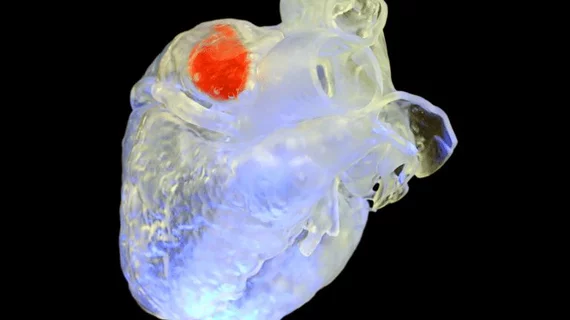Ultrasound-reactive ink hardens to patch organs, heal broken bones
A team of researchers from Duke University and Harvard Medical School has developed a “biocompatible ink” that solidifies into different 3D shapes when subjected to ultrasound waves, with medical uses for bone repair, heart valve replacement and more. The details were published in Science. [1]
According to the researchers, this “sono-ink” is made possible utilizing a previously developed ink that reacts to light, hardening into different structures inside the body. However, the photo-sensitive ink is limited in its potential uses because of the difficulty of sending light through a patient’s tissue. Ultrasound waves can penetrate deep into the body, making this new version of the biocompatible ink potentially more useful to surgeons.
According to a statement from the researchers, the technique they call deep-penetrating acoustic volumetric printing (DVAP), a “printing method,” makes the process possible.
"DVAP relies on the sono-thermal effect, which occurs when soundwaves are absorbed and increase the temperature to harden our ink," study coauthor Junjie Yao from Duke University said in the statement. "Ultrasound waves can penetrate more than 100 times deeper than light while still spatially confined, so we can reach tissues, bones and organs with high spatial precision that haven’t been reachable with light-based printing methods.”
DVAP effectively allows for objects to be 3D-printed in the body utilizing ultrasound waves to shape a molding material, in this case the ink.
“The ink itself is a viscous liquid, so it can be injected into a targeted area fairly easily, and as you move the ultrasound printing probe around, the materials in the ink will link together and harden,” Y. Shrike Zhang, study coauthor—and credited designer of the sono-ink—from Harvard Medical School said in the statement. “Once it’s done, you can remove any remaining ink that isn’t solidified via a syringe.”
So far, the biocompatible, ultrasound–reactive ink has only been tested on non-living models. A goat’s heart was sealed with the ink without causing damage to the organ, and a hardened bone replacement was generated using a chicken bone as a mold. To test other potential uses, the team also utilized DVAP for therapeutic drug delivery, loading the ink with a common chemotherapy drug to administer the medication to sample liver tissue, slowly releasing the chemicals via ultrasound.
Tests on humans are a long way off, and Zhang emphasizes that, despite the applications outlined in this test study, more research is necessary before sono-ink care delivery becomes a reality.
“We’re still far from bringing this tool into the clinic, but these tests reaffirmed the potential of this technology,” he said. “We’re very excited to see where it can go from here.”

